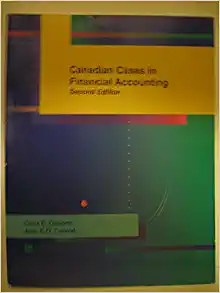Question
An impairment loss occurs when: Select one: a. the carrying amount of an asset exceeds the recoverable amount. b. the recoverable amount of an asset
An impairment loss occurs when:
Select one:
a. the carrying amount of an asset exceeds the recoverable amount.
b. the recoverable amount of an asset exceeds its initial cost.
c. the asset has a residual value of zero.
d. the recoverable amount of an asset exceeds the carrying amount.
Goodwill is distinguished from other intangible assets due to which of the
following characteristic?
Select one:
a. monetary nature.
b. separability.
c. identifiability.
d. physical substance.
Under the revaluation method of measuring an intangible, the asset is carried
at fair value and subject to charges for:
Select one:
a. interest.
b. amortisation and impairment.
c. inflation.
d. improvements.
AASB 116 Property, Plant and Equipment requires revaluations to be applied
to:
Select one:
a. individual non-current assets only.
b. assets on a class-by-class basis.
c. individual current assets only.
d. all assets on an individual basis.
A business combination is defined as:
Select one:
a. a transaction in which an acquirer obtains control of an acquiree.
b. a transaction or other event in which an acquirer obtains control of one
or more businesses.
c. a transaction or other event in which an entity obtains control of one or
more businesses.
d. a transaction in which one entity obtains control of one or more other
entities.
Cost incurred on intangible assets subsequent to initial expenditure are:
Select one:
a. recognised directly in the revaluation reserve account.
b. expensed immediately.
c. capitalised.
d. transferred to the retained earnings account.
Under the cost model, after initial recognition of a property, plant and
equipment asset the item must be carried at its:
Select one:
a. cost less accumulated depreciation and less accumulated impairment
losses.
b. historical cost.
c. net present value.
d. initial cost.
Select one:
a. tax losses.
b. temporary differences.
c. permanent differences.
d. the current income tax liability.
For a tangible asset to be recognised by an acquirer under a business
combination it must be probable that future economic benefits will flow to the
acquirer and:
Select one:
a. its fair value can be reliably measured.
b. it must be measured using the present value method.
c. it may not be a non-monetary asset.
d. it must be a current item.
If an entity does not expect to recover the carrying amount of an asset, the
entity has incurred a/an:
Items such as market knowledge, effective advertising programs, fundraising
capabilities and trained staff are NOT regarded as assets because they:
Select one:
a. are monetary items.
b. cannot be reliably measured.
c. are too difficult to manage.
d. are not controlled by the entity.
Appendix A of AASB 13 Fair Value Measurement defines fair value as:
Select one:
a. A transaction that assumes exposure to the market for a period before
the measurement date to allow for marketing activities that are usual and
customary for transactions involving such assets or liabilities; it is not a
forced transaction (e.g. a forced liquidation or distress sale).
b. The price that would be received to sell an asset or paid to transfer a
liability in an orderly transaction between market participants at the
measurement date.
c. The price that would be paid to purchase an asset or transfer a liability.
If shares are issued as part of the consideration paid, transactions costs such as
brokerage fees may be incurred. Under AASB 3/IFRS 3 Business Combinations,
the appropriate accounting treatment for such costs in the records of the
acquirer is a debit to:
Select one:
a. acquisition expenses.
b. share capital.
c. cash.
d. investments.
Under AASB 3/IFRS 3, the method of accounting for a business combination is
the:
Select one:
a. market value method.
b. purchase method.
c. acquisition method.
d. joint venture method.
A deductible temporary difference leads to the payment of:
Select one:
a. less tax in the future and gives rise to a deferred tax asset.
b. more tax in the future and gives rise to a deferred tax asset.
c. less tax in the future and gives rise to a deferred tax liability.
d. more tax in the future and gives rise to a deferred tax liability.
A taxable temporary difference leads to the payment of:
Select one:
a. less tax in the future and gives rise to a deferred tax liability.
b. more tax in the future and gives rise to a deferred tax asset.
c. less tax in the future and gives rise to a deferred tax asset.
d. more tax in the future and gives rise to a deferred tax liability.
Step by Step Solution
There are 3 Steps involved in it
Step: 1

Get Instant Access to Expert-Tailored Solutions
See step-by-step solutions with expert insights and AI powered tools for academic success
Step: 2

Step: 3

Ace Your Homework with AI
Get the answers you need in no time with our AI-driven, step-by-step assistance
Get Started


